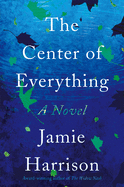
| Publisher: | Counterpoint | |
| Genre: | Women, Nature & the Environment, Family Life, Small Town & Rural, General, Literary, Fiction | |
| ISBN: | 9781640092341 | |
| Pub Date: | January 2021 | |
| Price: | $26 |
| Fiction |
by Jamie Harrison
With "so many books and so little time," few beg to be re-read. The Center of Everything, Jamie Harrison's sixth novel, is one of those few.
It's July 2002, and Polly and Ned are preparing to host a multi-generational party for her great-aunt Maude's 90th birthday in their Livingston, Mont., home. Still recovering from hitting her head in a bike accident, Polly carries on, knowing she easily crosses "the line between memory and the here and now," moments Ned lovingly calls "déjà you." Polly is stoic, even as the family mourns the mysterious loss of a young friend in the turbulent Yellowstone River.
These characters--balancing party planning with grief--shape a rich story when Harrison (The Widow Nash) backs up to 1968. Polly was eight, living on Long Island Sound with her parents, great-grandparents and the wife of a family friend serving in Vietnam. Polly heard the woman was "not well," and puzzles over the volatile Rita, but Rita's son, Edmund, also eight, proves to be a kindred spirit. This second story, of Polly's childhood, alternates with the 2002 chapters and is just as gripping, the links between them gradually surfacing: "every story was an echo, an inherited memory."
While The Center of Everything isn't a mystery, events do resonate. Long-ago drownings are the eeriest; sweeter are the generations' recurring affections, including passions for art and cooking. A family saga teeming with drama and no shortage of conflicts, detailed nature references ("the alley rabbit--clear-eyed, dusty gravel-gray fur," a "gyre of birds," a "quiver of bats") and family love and loyalty lend a gentle tone. Re-reading reveals "a-ha" moments cleverly tucked into this exquisitely crafted novel. --Cheryl McKeon, Book House of Stuyvesant Plaza, Albany, N.Y.
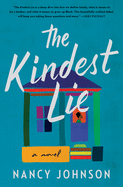
| Publisher: | Morrow | |
| Genre: | Women, Family Life, General, Literary, African American & Black, Fiction | |
| ISBN: | 9780063005631 | |
| Pub Date: | February 2021 | |
| Price: | $27.99 |
| Fiction |
by Nancy Johnson
Nancy Johnson's debut novel, The Kindest Lie, explores questions of race, motherhood, place and identity as one woman goes back to her hometown to find the child she gave birth to as a teenager.
From the outside, Ruth Tuttle's future seems full of promise. She has an Ivy League education and, despite the challenges of working in STEM as a Black woman, is pushing for a promotion at work. She is married to a successful PepsiCo marketing executive, a gentle and kind man who wants to start a family. Barack Obama has just been elected president. Inside, however, Ruth is consumed by her past. She has told herself for years that "her life began when she drove away from that little shotgun house in Indiana without her baby," a child she has never met nor mentioned since the day of his birth.
It feels inevitable that Ruth ends up back at the little Indiana house where she was raised by her grandmother, in search of answers for and about herself: What happened to her son? What does a mother owe her child? Is it ever acceptable to do something bad for the right reasons? Can we ever truly escape our pasts?
Johnson never asks these questions outright, but they lurk on every page of The Kindest Lie as Ruth revisits the failing industrial town that launched her into the world, peppered with flawed characters both unmoored by the harsh realities they face each day and anchored by those who hold them close, despite their flaws. --Kerry McHugh, blogger at Entomology of a Bookworm
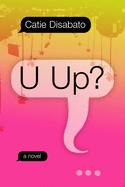
| Publisher: | Melville House | |
| Genre: | General, Coming of Age, Fiction, LGBTQ+ | |
| ISBN: | 9781612198910 | |
| Pub Date: | February 2021 | |
| Price: | $17.99 |
| Fiction |
by Catie Disabato
Catie Disabato imbues her follow-up to The Ghost Network with mystery and a little bit of the supernatural. Eve's best friend Ezra is missing, and he couldn't have disappeared at a worse time. It's the anniversary of Eve's friend Miguel's suicide, and this weekend she really needs Ezra to be at her side. It doesn't matter that she still talks to Miggy. Her work as a medium and witch has allowed her to communicate with Miggy's ghost via text messages. With one friend MIA and her other friend, Nozlee, the reason for him fleeing, Eve feels the absence of her group of friends more keenly. Though everyone thinks she's overreacting, Eve begins her weekend hunting for Ezra across Los Angeles's many neighborhoods with frantic energy fueled by overpriced cocktails and cocaine.
Disabato immerses U Up? in the world of 20-somethings in L.A. through Eve's group of friends. Everyone is connected to their phones, everyone is queer, and everyone curates their online persona heavily. As Eve lurks around L.A.'s finest bars trying to find Ezra, the strong connections to social media and her community help and hinder her search for her best friend. Disabato doesn't shy away from showing Eve as she really is--a complicated woman trying to manage her mental health (albeit poorly) during a challenging weekend complicated by the very literal ghosts of her city. Eve searches for clues like a classic private eye while putting together the mystery of why her best friend ghosted her. --Amy Dittmeier, librarian
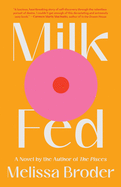
| Publisher: | Scribner | |
| Genre: | Humorous, General, Literary, Coming of Age, Fiction | |
| ISBN: | 9781982142490 | |
| Pub Date: | February 2021 | |
| Price: | $26 |
| Fiction |
by Melissa Broder
Rachel, the heroine of Melissa Broder's agitated sophomore novel, Milk Fed, is a need machine. At 24 years old, she has a desk job at a talent agency in Los Angeles, a gym membership she uses daily, a therapist she meets with weekly and deep-seated mother issues that express themselves through obsessive, highly controlled food rituals and bizarre sexual fantasies. Shaped by a lifetime of maternal nit-picking and neglect, Rachel's diet consists of nicotine gum, low-fat chocolate muffin tops and the small dopamine hits garnered when co-workers and acquaintances tell her that she looks too thin. Her compulsions, which set the novel's pace to a manic tempo, emanate from a deep reserve of endlessly unmet desire.
During a 90-day therapist-prescribed "emotional detox" from her mother, Rachel finds that her mother's critical voice becomes muted when a kind, overweight frozen yogurt chef enters her life. Miriam smokes clove cigarettes, watches old movies, drinks massively caloric fruity cocktails and eats whatever she wants, as long as it's kosher. Blessedly unburdened by the neuroses that govern Rachel's life, Miriam becomes a multi-faceted object of obsession for her: first, as the embodiment of her worst fears, then as a mother figure and, finally, as a lover.
"More than anything, all I'd ever wanted was a total embrace, the embrace of an infinite mother, absolute and divine," Rachel explains. This visceral and transporting portrait of self-denial and its twin, excess, sheds light on the psychology underpinning the American obsession with weight. Daring, chaotic and pleasingly heretical, Milk Fed is the work of a total pro. --Emma Levy, freelance writer
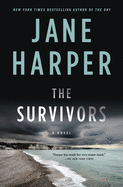
| Publisher: | Flatiron Books | |
| Genre: | Small Town & Rural, Mystery & Detective, Crime, International Crime & Mystery, Thrillers, Fiction | |
| ISBN: | 9781250232427 | |
| Pub Date: | February 2021 | |
| Price: | $27.99 |
| Mystery & Thriller |
by Jane Harper
From the dusty outback to the frigid Tasman Sea, Jane Harper (The Lost Man; The Dry) does a superb job capturing the geographical diversity of Australia, while simultaneously showing that human nature never really changes. As The Survivors begins, Kieran, his girlfriend, Mia, and their new baby have come home for a visit to Evelyn Bay, a small Tasmanian seaside town. Evelyn Bay is the kind of touristy place where the population doubles in the summer but is placid the rest of the year.
Kieran and Mia rarely return, however, because a dozen years earlier, in a terrible storm, Kieran's brother was killed and Mia's best friend went missing. It was the most dramatic day in town history, until the day after Mia and Kieran arrive, when a body appears on the beach. It's a young artist named Bronte, who was waitressing in Evelyn Bay for the summer. Tensions among the townspeople immediately skyrocket, as inevitable comparisons to the aftermath of the storm begin.
The police start questioning everyone who interacted with Bronte, and it becomes clear that someone local must have been involved in her death. Kieran is reeling, repeatedly drawn back to the sea caves where he nearly died, and where his brother met his end. Kieran's unease mounts as strange things keep happening, and he's not alone: most of the residents of Evelyn Beach are stretched to their limits. Atmospherically creepy, and full of fascinating characters, The Survivors is Jane Harper at her best, a surefire hit for fans of Tana French or Camilla Läckberg. --Jessica Howard, bookseller at Bookmans, Tucson, Ariz.
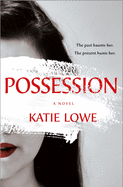
| Publisher: | St. Martin's Press | |
| Genre: | Psychological, Women, Suspense, Thrillers, Fiction | |
| ISBN: | 9781250200280 | |
| Pub Date: | February 2021 | |
| Price: | $27.99 |
| Mystery & Thriller |
by Katie Lowe
Katie Lowe (The Furies) blends psychological suspense with an unreliable narrator, adding hints of delusion, a pinch of gothic sensibility and various layers of mystery in her sophomore thriller, Possession. In 2008, Hannah McLelland's husband is killed in their bed by a knife to the throat. Hannah remembers little other than waking up to blood. The crime scene is "off" and authorities are perplexed, until an anonymous tip leads them to a young man who winds up in prison for Graham's murder.
Ten years later, the threads of the raggedy case are newly tugged by those behind the podcasting sensation Conviction. Hot off a successful exoneration, the crime investigation show has its sights set on Hannah for season four: The Murder of Graham Catton. In 2018, Hannah is living with her teen daughter and a stable newspaper editor, Dan, in the remote, rural village of Hawkwood, while working as a psychiatrist in an eating disorders clinic.
But Hannah hasn't ended up in Hawkwood by chance and is escaping more than the fallout from Graham's murder. As the Conviction team digs into the case, long-buried facts are revealed, and Hannah is so centered in the crosshairs even Dan and Evie become wary. Lowe impressively weaves a web of past and present intrigue. Even more notable is her talent in tying everything together without excessive incredulity, particularly considering Hannah's history, numerous plot threads and the social media aspect of the case, all of which converge in a blockbuster of a finish. --Lauren O'Brien of Malcolm Avenue Review
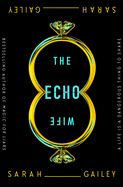
| Publisher: | Tor | |
| Genre: | Genetic Engineering, Domestic, Thrillers, Fiction, Science Fiction | |
| ISBN: | 9781250174666 | |
| Pub Date: | February 2021 | |
| Price: | $24.99 |
| Mystery & Thriller |
by Sarah Gailey
Sarah Gailey's unsettling The Echo Wife considers pioneering scientist Evelyn Caldwell, who had everything she wanted: an award-winning career pushing breakthroughs in the field of human cloning, and a husband who worked alongside her and supported her ambitions. And then her life was rudely derailed.
It started with her finding a stray hair on her husband's jacket. It wasn't Evelyn's; it wasn't even human. To her horror, she discovered her husband, Nate, had been having an affair--with a clone. A genetic replica of Evelyn. Created in secret with Evelyn's research, which Nate had stolen.
Even worse, Evelyn's clone, Martine, can do something no clone should ever be able to do, and its discovery could shut down the work Evelyn has spent her entire life perfecting. But instead of euthanizing the "specimen," Evelyn is forced to help Martine do something unimaginable.
Though the novel has sci-fi elements, it reads like a mind-stretching domestic thriller. From chapter to chapter, whatever readers think might happen next is likely wrong. The Echo Wife explores identity, agency and the price of female ambition. Some of Evelyn's inner musings are repetitive, and a major plot point--about how Martine pulls off the aforementioned impossible feat--is left unexplained, but intriguing questions are raised about the ethics of cloning. While Evelyn describes herself as "cold, logical, direct, merciless," Martine exhibits compassion and can sometimes see Nate's true nature more clearly. Gailey (Magic for Liars) will have readers pondering what truly makes someone human. --Elyse Dinh-McCrillis, blogger at Pop Culture Nerd
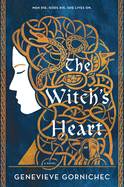
| Publisher: | Ace | |
| Genre: | Magical Realism, Fairy Tales, Folk Tales, Legends & Mythology, Fantasy, Fiction, Historical | |
| ISBN: | 9780593099940 | |
| Pub Date: | February 2021 | |
| Price: | $26 |
| Science Fiction & Fantasy |
by Genevieve Gornichec
Readers familiar with Norse mythology will recognize many of the characters in Genevieve Gornichec's The Witch's Heart, but this historical fantasy debut adds an emotional depth and a feminist angle often missing from those ancient tales.
Powerful witch Angrboda has been killed three times by Odin and his pantheon, but saves herself each time through magic she doesn't fully understand. Restored but for her memories, she flees to a cave deep in a forest to hide and recover. Soon two people find her: Loki, carrying the heart Odin cut out of Angrboda's chest, and Skadi, a mortal trader woman. Angrboda and Skadi trade magical medicines for home goods, building a friendship that serves as an anchor for Angrboda as she confronts seemingly insurmountable challenges. Her relationship with Loki is trickier. As a god, he's absent most of the time, even as they fall in love and have children.
Angrboda faces heartbreak and betrayal, grappling with a history she doesn't remember and the terrible future she's foreseen. As she's hunted by Odin and tries to avert Ragnarok--the apocalypse in Norse myth--Angrboda's fight is thrilling, yet characterized by her remarkable empathy, maternal nature and drive to heal others. Gornichec manages a careful balance, putting forth a heroine who is as vulnerable as she is fierce.
Readers will empathize with this witch as she fights for her children, herself and the world as she knows it--or, better yet, the world as it could be. --Suzanne Krohn, editor, Love in Panels
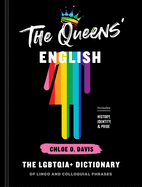
| Publisher: | Clarkson Potter | |
| Genre: | LGBTQ+ Studies, Dictionaries, Sociolinguistics, Language, Reference, Linguistics, General, Language Arts & Disciplines, Topic, Social Science, Humor | |
| ISBN: | 9780593135006 | |
| Pub Date: | February 2021 | |
| Price: | $22.50 |
| Starred | Social Science |
by Chloe O. Davis
Chloe Davis's delightfully informative, succinct, helpful and playful dictionary of more than 800 LGBTQIA+ words and fabulous phrases is truly "sickening" (defined within as "astonishingly impressive"). The Queens' English is as much a glossary as it is a dazzling art book, boasting colorful and engaging art and illustrations on every page by Troy Lambert and contributors Cassandra Fountaine, Mark Uhre and Shanee Benjamin.
Davis does not merely define words and phrases--she offers "Usage Notes" that warn readers about terms that are considered derogatory, as well as slurs that have been reclaimed by the community. She also gives readers stories about the origins of the words. The reclaimed terms "bull dyke" and "bull dagger" can be traced back to the Black lesbian community in the 1920s Harlem Renaissance, where these terms were embraced by lesbian blues singers Ma Rainey and Bessie Smith. The 1970s ballroom culture originated "work," "fierce," "shade" and "read." The dismissive signifier "Bye, Felicia" originated in the 1995 film Friday. The book also sprinkles longer pieces throughout, like "History Lessons" (covering gays in the military, HIV/AIDS, Stonewall, etc.) and "What's My Gay Type?" (find the correct label for your body type, from "bear" to "twink"). There's even an instructive sidebar on how to tuck (for men) or bind (for women) when dressing as the opposite sex.
With the breezy, fun and informative The Queens' English, no one need ever confuse "kai kai" (sex between two drag queens) and "kiki" (gathering for gossip and conversation). They can sashay away and pick up a copy of this sickening xtravaganza! --Kevin Howell, independent reviewer and marketing consultant
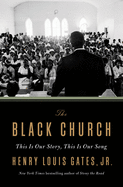
| Publisher: | Penguin Press | |
| Genre: | Christian Church, Civil Rights, Religion, Christianity, History, African American & Black, Political Science | |
| ISBN: | 9781984880338 | |
| Pub Date: | February 2021 | |
| Price: | $30 |
| Starred | Religion |
by Henry Louis Gates Jr.
Henry Louis Gates Jr. (Finding Your Roots; The Annotated African American Folktales) has created a fascinating history book to accompany his PBS series of the same title. Meticulously researched, The Black Church spans more than 400 years of Black ecclesiastical history in the United States--beginning with Catholic enslaved people brought by the Spaniards and continuing all the way to John Legend's take on the essential role the church played in his early life. As Gates puts it, "In a world of utter instability, where African American families could be torn apart at a moment's notice, the enslaved found a rock in the religion and practices they developed in communion with one another."
The Black Church is filled with pictures of Black churchgoers over the years, as well as wide-ranging historical information, including discussion of how Islamic and West African influences brought over by enslaved people played into the creation of the modern Black style of worship. Gates indelibly proves his point about how important church was as a social structure to most Black people. Today, however, the church faces many battles, including the role of women and sexual minorities in church leadership, the after-effects of the crack epidemic and mass incarceration, and staying relevant to young Black people. The church may have to pivot, but Gates believes it will remain vital, since "Black Lives Matter forces the Black church to return to one of its foundational claims; that we are all children of God." --Jessica Howard, bookseller at Bookmans, Tucson, Ariz.

| Publisher: | Bloomsbury YA | |
| Genre: | Emotions & Feelings, Romance, Contemporary, Coming of Age, Social Themes, Young Adult Fiction, Prejudice & Racism | |
| ISBN: | 9781547600601 | |
| Pub Date: | February 2021 | |
| Price: | $18.99 |
| Starred | Children's & Young Adult |
by Renée Watson
Newbery Honoree and Coretta Scott King Author Award winner Renée Watson (Piecing Me Together; Ways to Make Sunshine) tells the warm and hopeful story of 17-year-old Nala Robertson in her third solo YA novel, Love Is a Revolution.
Nala is ready to enjoy summer in her Harlem neighborhood. Her plans include hanging out with friends Sadie and "cousin-sister-friend" Imani (an Inspire Harlem teen activist), getting a new hairstyle ("According to Grandma, hair is a Black girl's crown") and finding romance ("the most important"). When she meets Tye, a charming, Inspire Harlem member and friend of Imani, she's sure her summer dreams are coming true. The more time Nala spends with Tye, though, the more she realizes how little they have in common--Nala is not a vegetarian, not well versed in Black history and nowhere near as woke as Tye. Desperate to be liked, Nala tells a lie. Which snowballs into another. And another. Of course, her untruths are uncovered, and Nala must figure out how to mend the broken relationships with Tye and herself.
Watson's detailed depictions bring to life the bustling streets, overcrowded subways and humidity of a Harlem summer. She also skillfully builds a fun, loving Black teenager who makes some unwise but ultimately understandable decisions. Diversity is a focus in both Nala's city and her life, shown through a variety of body types, skin colors and ways of being. Teen and tween readers questioning their own identities and places in the world should connect with Watson's meaningful social and environmental themes. --Kharissa Kenner, children's librarian, Bank Street School for Children
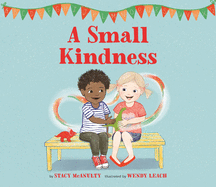
| Publisher: | Running Press Kids | |
| Genre: | Friendship, Values & Virtues, Manners & Etiquette, Social Themes, Juvenile Fiction | |
| ISBN: | 9780762495221 | |
| Pub Date: | February 2021 | |
| Price: | $17.99 |
| Children's & Young Adult |
by Stacy McAnulty, illust. by Wendy Leach
In A Small Kindness, Stacy McAnulty (The World Ends in April) and Wendy Leach (Runaway Words) offer a sincere, joyous and child-centered take on what it means to pay it forward.
A diverse group of young students anxiously queue up in front of their brown-skinned teacher, Ms. Jones. All except one child are illustrated in a sepia palette and the text hints at what's to come: "It was like a game of tag." Upon entering the building, Alice--shown in mustard-yellow sneakers, a green shirt and a bright purple backpack--smiles at Lucas, who uses a walker. Lucas--now in a bright red shirt featuring a boldly yellow lion--shares happiness by greeting a nervous-looking Jasmine. As the day continues, each act of kindness begets another. One child offers assistance to Mr. Freeman the custodian, who in turn encourages Rhea during gym class: "You'll get it next time!" With each act of kindness, a ribbon of color and light streams from one person to the next, gently linking the two and doubling the joy. Leach cleverly captures each moment of transformation by depicting the person with two separate halves: one side dull, the other in bright splendor. One by one, children and adults trapped in the sepia color palette morph into colorful brilliance.
McAnulty's text is sparse, warm and approachable--"Henry complimented Cora. Cora offered a seat to Mateo"--and Leach's illustrations of children with a variety of skin tones and abilities are delightful. The two narratives ebb and flow seamlessly, filling in the details of the story until the children become links in a friendly chain, awash in a sea of color. --Kieran Slattery, freelance reviewer, teacher and co-creator, Gender Inclusive Classrooms